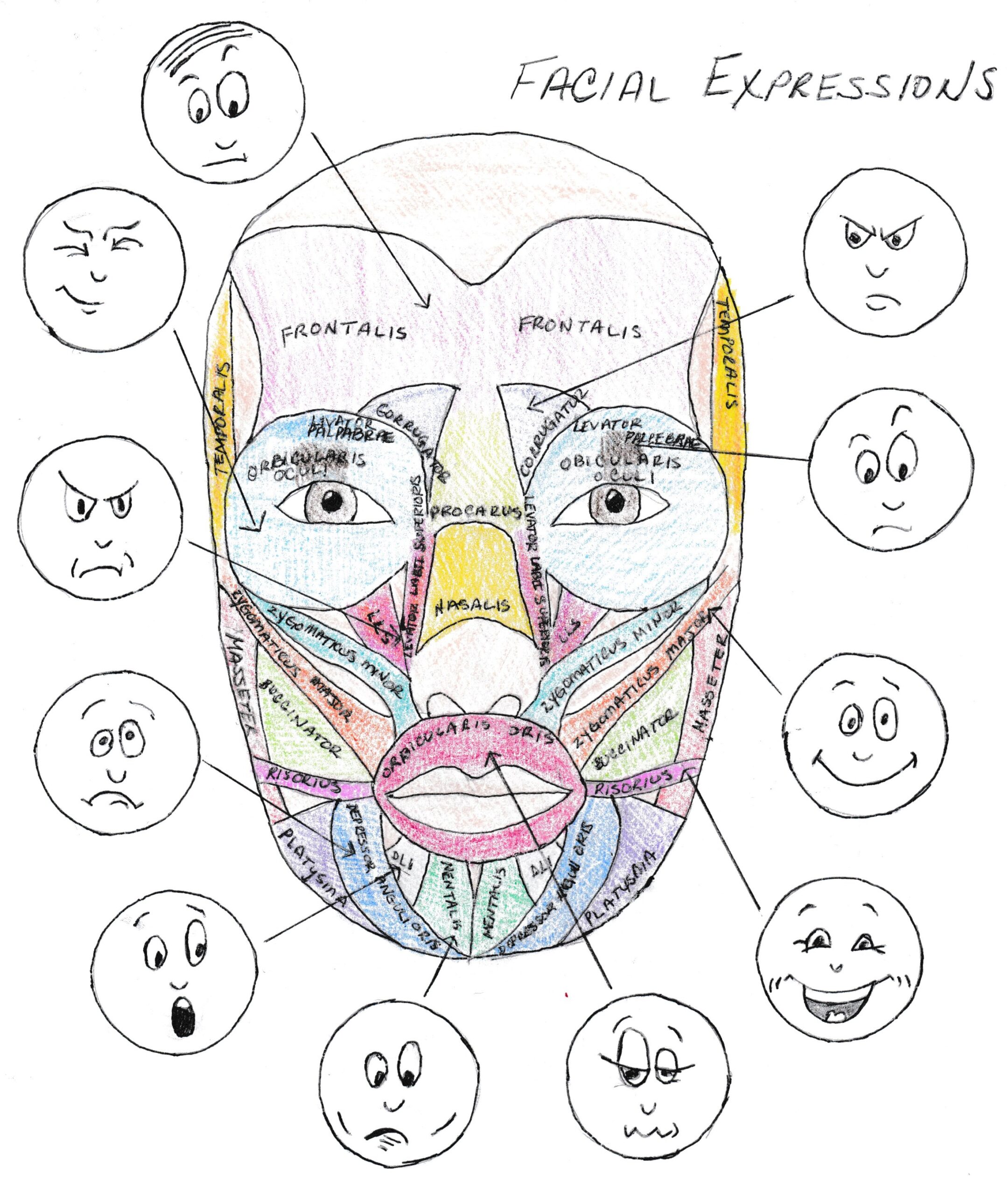For our STEAM project, I chose to use the objective of “relate the interaction of muscles and the skeletal system.” The facial muscles are different than most of our other skeletal muscles, because they insert into the skin and therefore create our facial expressions by moving the skin, rather than bone. For my illustration, I drew a picture of the face with the different facial muscles, and then I also drew a picture connecting those muscles to the main facial expression they are involved in creating. 

Hi Kaitlin,
Facial expressions and the muscles needed to generate these various expressions have been an area of interest for me throughout this course as well. As another individual who constructed an illustration drawing for their project, I can safely say that your drawing is quite satisfactory. I enjoyed the facial expressions that you drew in order to signify which muscles are included in the generation of these expressions.
Throughout your project paper, you discuss the importance of moving the skin, versus the bones, in order to facially express various emotions. I found this to be informative and an excellent way to represent what tissue structures are actually being utilized in facial expressions. In your digression of the initial explanation of the objective you were targeting, I found it interesting to read and learn about the muscles utilized in squinting. The muscles located in the ocular regions are fascinating as they have unique shapes and restrictions. Specifically, in this explanation, it was helpful that when you identified the 3 parts of the orbicularis oculi, you included the correct medical term as well as explaining in simpler terms what each part does.
After analyzing your project and learning from what you shared, it would be interesting to further research facial expressions in patients who have experienced strokes and are unable to formulate various expressions. Perhaps in this research, it would be beneficial to understand why strokes inhibit various muscle and skin movements in facial expressions.